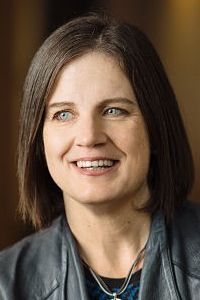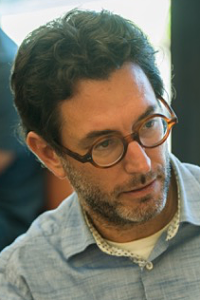How COVID-19 is Changing the World: Views from Monash University
This article, first published in the Monash Lens at Monash University and republished under a CCBY-NC-ND 4.0 license, gathers input from a cross-disciplinary group of social and behavioral scientists and members of the humanities faculty at the Australian university. Read the original article and see more material from the Lens here.
A new appreciation for social connection
Dr Barbara Barbosa Neves, Sociology

As we self-isolate from family, friends, and communities to stop the spread of the novel coronavirus, many of us are experiencing the cruelties of social isolation and loneliness. These cruelties are not new – they’re the reality of many older Australians, particularly those who are frail and live alone or in care homes.
My research shows that reality. Isabelle, living in a care home, told me that she felt “forgotten … that no one gives a damn if you’re alive or dead”. It’s wrong to feel so lonely, she said, because she has a family, and they would be sad if they heard her say this. But you can’t control loneliness on your own; it creeps up on you when you lack companionship, when you feel isolated, when your relationships are not sustaining the meaningful social connection that you need.
Social connectedness matters – relationships affect our health and opportunities to thrive in society. Loneliness and social isolation make us sick. We must thus practice “physical distancing,” not “social distancing”, because we must remain connected — as recently acknowledged by the World Health Organisation. Technology is helping. In the past weeks, we’ve heard about people sharing mealtime over video calls, or joining online group activities such as dance classes.
Despite the toll of this pandemic, it’s giving us a chance to realise the power of social connection. It’s providing a window into how pernicious loneliness and social isolation are. It’s forcing us to talk about it. It will create more awareness towards lonely older people and to each other – and show that we can take a more active role in combating loneliness.
The novel coronavirus is also allowing us to explore the role of technology in helping maintain social closeness, regardless of age. We’ll become more critical about our digital skills and practices, and will have a renewed insight into the limitations of technology and into digital exclusion. Not everybody is online or has the same access and skills to use new technologies. This not only affects some older Australians; it affects all of us.
New modes of civic life have emerged
Professor Scott Wright, Journalism

COVID-19 is fundamentally changing community and social life in Australia. Physical distancing has closed pubs, cafes and clubs – so-called “third places” that exist beyond the home (first place) and work (second place), and that support the kinds of informal conversation and sociality that underpins civic life and community.
However, we’re seeing the emergence of new forms of online community – or what I’ve previously described as “third spaces.”
In response to the coronavirus, we’ve seen existing face-to-face communities move online, and totally new forms of community, social life and support – seemingly changing the tone and utility of platforms such as Twitter. These exist alongside the myriad existing online communities, from parenting and sports groups, to gardening and cookery forums.
While the coronavirus has created deep anxiety and concern for us all, these new forms of community, social life and support – particularly at the local level – will positively impact life long after the coronavirus has faded into memory.
First, we’ve seen the emergence of new forms of collective activities online in which people come together from living rooms across the country and globe to collectively exercise (“PE with Joe” Wicks), and cook (Jamie Oliver’s Keep Cooking and Carry On).
Second, we’ve seen the emergence of local WhatsApp groups at the street or neighbourhood level. As an example, my father lives alone in the UK. His street has created a new WhatsApp group in which people engage in informal social chat, and support each other (sharing, shopping, doing jobs). Recently, the street went outside and sang happy birthday to my dad. This will not, of course, replace physical community and socialisation after physical distancing ends, though it may change it – and for the better.
We’ll be increasingly monitored through our devices
Professor Mark Andrejevic, Media Studies

The current crisis will help normalize the existing and latent public monitoring capacities of digital systems originally designed to service online commerce. In the face of the threat posed by COVID-19, public authorities around the world have had ready recourse to tech companies and telecoms as a means of both public communication and the collection of a growing range of data to help manage the public response.
Each passing day brings a fresh account of the ways in which tech companies can, and are, being folded into the public response: for “contact tracing” and location monitoring, for assessing the extent to which social distancing and mobility restrictions are being observed; even, potentially for predicting and diagnosing the onset of illness.
This response is in part a matter of convenience. Our devices and platforms already collect data that can be used to track people’s movements, behaviour, and even their concerns and anxieties as these are entered into search engines and shared via social media.
It’s also testimony to the reconfiguration of our infrastructural imagination. The development of what was once dubbed the “information superhighway” has – despite its critical infrastructural role – been largely offloaded onto the private sector in many nations. Under the pressure of urgency, we thus find ourselves turning to the tech giants, despite recent concerns about the clash between their commercial priorities and the public interest.
There are benefits to having such an infrastructure in place to address the pandemic’s threat, but we must avoid the tendency to treat it as if it were a public one.
The systems and processes these companies have developed are neither transparent nor publicly accountable. As we turn to them in our moment of need, we are, in effect, providing public licence for new uses of information they’re already collecting, and this will be difficult to undo. All kinds of data can be repurposed as health data – and often without the restrictions that typically apply to medical information.
We can anticipate an ongoing incursion of tech companies into health services and markets, with fresh rationales for comprehensive monitoring and tracking. If they can help manage a pandemic, why not also the annual flu season, for example, or even the onset of heart disease? We can certainly imagine potential benefits to the diagnostic capacity of our mobile phones, smart speakers, and their associated platforms, but also important concerns about the widespread commercial use of the detailed health-related information they’ll collect.
Crime will morph and change
Associate Professor Rebecca Wickes, Criminology

The COVID-19 pandemic has drastically changed social life on a global scale. Nearly overnight, in countries all over the world, routines were reduced to all but a handful of activities and daily mobility patterns became concentrated around our homes.
Crimes of opportunity thrive on routine activities. Pickpocketing, for example, is a crime that occurs in busy transport hubs where thieves go largely undetected among the hustle of city life. Break-and-enter predominantly occurs when homes are vacant. Alcohol-fuelled violence spikes late at night in and around entertainment centres. With empty trains, homes rarely left unattended, and pubs and clubs shut for the foreseeable future, these crimes will drop significantly.
But crime abhors a vacuum. Where some crimes might decrease, others will gain momentum. In the coming months, we’ll see an increase in pernicious crimes that occur in private spaces.
Cyber crimes are already showing an upward trend. Cyber offenders are capitalising on the COVID-19 pandemic by referring to the crisis in phishing attempts that lure victims towards dodgy URLs. Domestic and family violence will rise, as home is not a safe place for everyone. Child abuse is likely to increase, and as worryingly, may go undetected for longer periods of time if children aren’t attending school and daycare.
New crimes are also emerging. With increased police powers specific to the COVID-19 crisis, people can receive extensive fines for violating stay-at-home orders. Those who don’t comply with such orders can be arrested and put in jail. In England, a new crime referred to as “malicious coughing” has resulted in arrests and imprisonment.
So what will happen when the COVID-19 crisis ends?
Evidence from natural disasters suggests that the crime peaks and troughs in the aftermath of a significant event return to their pre-event levels. When humans resume their daily activities, and cities find their rhythm again in a post COVID-19 world, so, too, will offenders. Crime is the perennial human virus for which there is no vaccine.
Family violence will intensify
Dr Kate Fitz-Gibbon, Director, Monash Gender and Family Violence Prevention Centre

In 2015, family violence was declared a national emergency in Australia. In the five years since, there’s been substantial political commitment, advocacy and reform across Australia to improve responses to family violence, and better prevent the killing and injury of Australian women and children.
The 2016 Victorian Royal Commission into Family Violence, and other state-led reviews, have provided road maps to transform whole-of-system responses to family violence, to build the evidence base needed to prevent all forms of family violence, and to recognise the need to hold perpetrators to account.
The COVID-19 global pandemic and the new restrictions to everyday life in Australia demands a rethink of how we keep Australian women and children safe.
Combined with the resulting economic crisis, the heightened risk of family violence for women and children cannot be underestimated. In a country where already one woman a week is killed by male violence, and one child a fortnight is killed by a parent, it’s terrifying to think what these numbers may look like for 2020. And this is just the tip of the iceberg.
With many Australian women now effectively kept in isolation with an abuser, the extent of the injuries, disability, hospitalisation and suicide requires national leadership, dedicated resources, and innovative service design and delivery.
New forms of family violence are also likely to emerge during this time. There are already examples of this in Australia and internationally with specialist practitioners noting the emergence of threats to deliberately infect, and the use of social distancing restrictions to manoeuvre child custody arrangements.
In a post-pandemic Australia, as the nation recovers from the significant health and economic impacts of COVID-19, we’ll need to prioritise Australian women and children’s safety. Family violence will emerge from COVID-19 as the national emergency it represented before. To this end, while much in the world will change because of the coronavirus pandemic, the significant threat of male violence in the lives of Australian women will remain a constant.
Political leadership may get better
Associate Professor Paul Strangio, Politics

Amid the Global Financial Crisis (GFC) of 2008-2009, there was no shortage of those who leapt wishfully to forecast that the turmoil in the international economic system would remake politics and governance in the advanced nation states of the world.
It was said that the crisis marked the death knell of neo-liberalism, and that in its wake would be forged a new social compact in which the interests of the public were no longer subordinated to the imperatives of the marketplace.
Those predictions proved naive. Neo-liberal principles might have been discredited, but there was little evidence post-GFC of a new policy settlement. Instead, the past decade has largely been a story globally of political and policy gridlock, while worldwide we’ve also witnessed a proliferation of authoritarian populists who seductively preach black-and-white solutions in the face of an environment of chronic uncertainty.
While the political centre has held better in Australia than in most other countries, we have not been spared this unhappiness. The local democratic distemper has been manifest in a substantial body of evidence registering declining public faith in politics and governing processes, six changes of prime minister from the end of the John Howard era, and a sorry record of partisan fighting to a standstill over policy. Indeed, to some extent, the past decade in Australia has resembled previous eras (the 1930s and 1970s) in which one policy regime has exhausted its utility and another has yet to bloom.
Will COVID-19 – arguably the most perilous peacetime challenge in living memory – achieve what the GFC couldn’t? Will we see a “new” politics and a “new” policy settlement emerge chrysalis-like from this crisis?
The answers are that it’s too early to know, and that it’s safer to be circumspect when it comes to expectations. On the other hand, history suggests that crises do offer rare opportunities for transformation if the political class has the wherewithal to seize the moment.
Have we witnessed intimations of that opportunity being grasped in recent days as Scott Morrison’s conservative Coalition government has implemented policies hitherto philosophically unthinkable on its side of politics, a rarely-seen degree of collaboration between different tiers of government, and a cessation of business-as-usual party hostilities?
At the very least, these trying days have provided a timely and much-needed reminder that political leadership and government can be instruments for the public good.
The creativity of cities may be squashed
Dr Xin Gu, Creative Industries and Media Studies

Cities give their name to “civilization”, as they do to politics and democracy. From the great Polis of Athens to the modern cosmopolis of New York, or London or Tokyo, cities have become a visual emblem of human evolution.
From the beginning of the modern city in the 18th century, the great city spaces have been about “seeing others” and “being seen.”
Walter Benjamin’s urban flaneur is not just any city stroller, but the ur-figure of the modern artist and consumer. Most great cities have endured great crises.
More than 100,000 people were ill during the great smog of London, and thousands died in 1952. It led to some of the first environmental legislation in the world by the city of London, and others followed. Chicago was reborn from the great fire of 1912, its rebuilding demanding it address racial and class divides, and inspired a rethink of the “city beautiful”.
This resilience has informed the transition into post-industrial cities, regaining their prominence as knowledge hubs, creative cities, and key nodes in global networks.
An urban pandemic on this scale has long been foreseen, with warning shots from SARS onwards. The urban way of life –networked, clusters, intensely transactional – is now intrinsically linked to viral transmission.
Our whole urban way of life, once celebrated (and priced) so highly, has now been put to stop. Amenities crucial for our working and social lives have been shut. Our cities have turned into ghost towns overnight.
Arts and cultural venues were the first to be shut, and those in the cultural sector are struggling to survive. Will cities come back to life after this crisis?
Nobody seems to ask this question as we’re all strangled inside of our home. History tells us the answer is yes. But all crises are opportunities for change. Before we go back to “business as usual”, we might want to take the time (which we now have) to think about what kind of city we want to go back to. Gentrification, asset bubbles, rent hikes, displacement of small retailers and makers – in our understandable rush to get back to the hustle and bustle of normality, we need to think about a new kind of rebuilding, remaking the social and cultural fabric of a really creative city.
Artists and audiences will be more agile online
Professor Cat Hope, Head of Sir Zelman Cowen School of Music

COVID-19 will see us engaging with the arts more than ever; listening to music, reading and watching more films than ever. Yet the hierarchy of platforms where we engage with the arts will shift and create indelible change for the artists and their industry into the future.
Concerts that were once only accessible to those with the budget for expensive tickets or transport to the centre of their city are now being made available to anyone with an Internet connection, as large arts organisations attempt to keep audiences engaged while they work out what to do next.
Concerts from around the world will be shared in this way, shaping audience taste and expectation. This flood of content will see ingenious methods of curation evolve, that will require new marketing savvy to reach and engage these new audiences. It is likely these online materials and approaches to their distribution will remain online and be available to broader audiences who continue to experience limited mobility. This will likely force change to copyright legislation, already teetering on irrelevance under pressure from a constantly evolving digital share space.
Artists will lead change through the increasing self-determination this period will demand from them, finding new ways of making art together, unique opportunities for involving audiences, collective models of authorship, distribution and engagement. The longer isolation is required of us all, the more innovative artists will become. Established institutions will fold and more flexible models will emerge. Artists will be looking for different representation as those they relied on fail to support them: they will turn to their communities and the artworks themselves.
Whilst the surge of applause, that catch of a performers eye, warmth of a crowd, or vibration of a sound system will remain precious, ephemeral and incalculable qualities of the in person performance experience, online engagement will help us find what we are missing.
The migration boom will come to an end
Associate Professor Alan Gamlen, Geography

COVID-19 is having a profound impact on dynamics of human mobility, migration, and social connection that underpin population diversity. Some of these effects will be short-lived, but others will have long-lasting implications. Is it possible now, amid the turmoil, to tell the difference? Sudden, unforeseen shocks such as COVID-19 are proof in themselves that making projections is risky business. But we know enough to make some tentative projections and informed guesses about how COVID-19 will change the nature of migration, diversity and inclusion in the next three to five years.
It’s reasonable to expect that the COVID-19 crisis will accelerate the end of the migration boom that has occurred across developed destination countries in recent decades. To date, Australia and New Zealand have gone through two great migration booms: the first took place from roughly 1840-1900; the second from about 1990 until the present day (Gamlen and Sherrell, forthcoming).
Between these peak periods of immigration, flows of immigrants and stocks of foreign-born residents have fallen, at times dramatically, and for sustained periods. Many developed economies in North America and Europe have gone through very similar migration cycles.
The Global Financial Crisis and the Great Recession marked the beginning of the end of the most recent migration boom, but I think it’s reasonable to predict that COVID-19 may amplify its demise. Specifically, I suspect that the COVID-19 crisis will have this impact through changes to individual decision-making; changes to the structure of labour markets; changes in public attitudes to immigrants; and changes to immigration controls.
A gendered approach could enhance global stability
Professor Jacqui True, Director of the Monash Gender, Peace and Security Centre

The COVID-19 crisis is exposing the fragility of all our systems, our complex dependence upon one another, and health and healthcare as the most basic of human rights. At the Monash Gender, Peace and Security Centre, we adopt a gender and security lens that views the current crisis from a wider angle than the either/or political debate focused on the health of the population versus the health of the economy.
Gender security encompasses health security, material or economic security, and security from violence and conflict. Such a lens requires us to ask, “Who is most affected”, and “Who is responsible” for pandemic preparedness, care, and recovery, and to consider gender inequalities and imbalances that will hold us back in recovery from COVID-19.
With regard to “who is responsible,” we note that women constitute more than two-thirds of the healthcare workers, but are in the minority of those charged with COVID-19 decision-making. Women representatives, for example, spoke for just 40 minutes of four hours at the first COVID-19 Australian parliamentary session, according to research by Sonia Palmieri. As Julie Smith writes, “women should not just be the babysitters of the economy.” With a gender lens, we need to consider not only those who lose their paid jobs, but those who are taking up an even bigger unpaid job than before on the home front, ensuring the health, education and wellbeing of (extended) family members the world over.
A gendered approach to security leads us to challenge conventional approaches to securing our national borders, and to embrace those who are stranded across borders such as temporary migrant workers and international students without access to social networks or welfare, as well as those who don’t have good access to healthcare in displacement, in camps, and slums.
Social distancing, which is profoundly counter-intuitive for the most privileged of us who have spread the disease through our global mobility, is a virtual impossibility for those living in these poor circumstances, and in conflict-areas such as the Gaza Strip, for instance.
In previous health emergencies, such as the Ebola and Zika crises, violence against women and girls was a silent epidemic, especially in already fragile, conflict-affected situations. We should be concerned about the sexual and reproductive health of women and girls at this time, as weakened public health sectors in developing countries, due to decades of IMF-promoted spending cuts, respond to the outbreak and cannot address these needs, while contraceptives supply chains are also disrupted.
UN Secretary-General António Guterres has called for a global ceasefire to contain the current spread of the disease. There’s a chance now to stop unnecessary war, violence and division as we focus on the common threat to all our security.
COVID-19 is not a war we need to fight – it’s a global health crisis that will require local and global efforts to re-balance and reinvent our social, economic and environmental systems, as well as gender divisions of labour, power and resources for the stability and survival of humanity. The stakes are that high.
Medical ethics will be transformed
Associate Professor Justin Oakley, Monash Bioethics Centre

When the coronavirus pandemic subsides, and the full scale of its impact becomes more apparent, its mark on medical practice and medical ethics will also emerge.
While the basic values and principles of medical ethics will remain, the broad reach of the pandemic will likely alter how these are embodied in clinical practice. The presumption of confidentiality has a special importance in medical consultations, and is pivotal to their success. But both doctors and patients will become more accepting of the need for “public interest” exceptions to medical confidentiality, where certain details about patients with serious infectious diseases are reported to public health authorities to facilitate contact tracing – especially where an emerging disease threatens to significantly endanger the community.
More fundamentally, having played their part in flattening the curve of the pandemic, doctors will more readily recognise the importance and extent of their ethical obligations as professionals to make their services broadly available to the community. Indeed, people generally are likely to become more civic-minded in meeting their health responsibilities to the community, and to take more responsibility for remaining healthy.
The ripples of the pandemic will be evident not only in doctors’ and patients’ actions, but also in how doctors understand and are guided by their priorities, which are part of their professional character.
Doctors have a social remit to develop and act on the role virtues of their profession, requiring them to prioritise certain considerations over others in their clinical decision-making. Thus, doctors are expected to prioritise the best interests of their patients in many circumstances, using resources in acceptable ways from the perspective of justice.
Generally prioritising the best interests of their patients, and maintaining therapeutic relationships with them, are crucial aspects of exemplifying the role virtue of medical beneficence. But given that resource shortages during this pandemic have required some doctors to put the interests of patients with worse prospects behind the interests of those with better prospects, doctors might need to readjust their priorities somewhat to repair therapeutic relationships with, and to regain the trust of, patients in the former group (especially with patients whose health is already compromised).
The challenges of rebuilding this trust may well be compounded by financial austerities in the healthcare system for some time to come. Indeed, the coronavirus pandemic is a bracing reminder of how pivotal an adequately-resourced healthcare system is to a well-functioning society.
History shows that who dies will matter greatly
Professor Guy Geltner, History

After the Black Death (1346-53) struck, artisans and laborers began earning more and acquiring new freedoms. Whatever observers made of the process, they admitted it amounted to radical change. The direction of that change, however, was not self-evident, since it relied on mortality’s specific demographic profile.
Plague was hardly an indiscriminate killer, but it left many workers with more choices, and many employers with less, undermining existing legal strictures and ideological discrimination.
COVID-19, by contrast, is far less lethal, and overwhelmingly fells people above 60, and those weakened by certain underlying conditions. What could this signal about social stability or crisis, and is one better than the other?
Three things about COVID-19’s mortality pattern suggest stability. First, painful as death may be individually, the current pandemic’s impact collectively dovetails with biological and cultural expectations. Many cultures are used to older and frailer people dying, only now it’s happening sooner and perhaps more tragically. Next, elderly deaths accelerate the redistribution of wealth and power, and alleviate emotional pressures associated with caring for the chronically ill. Both can be defended as sustaining an accepted social order, not questioning it. Last, where the elderly constitute a major focus of welfare states, communities and families, resources may be redirected to help survivors and attain a new equilibrium.
These help explain why frail and elderly people’s vulnerabilities are sometimes flagrantly ignored by younger generations these days.
Thankfully, developing a vaccine is a matter of time, for no life should be put before another. Yet stability in the short term could help resist or assist other, more polarising processes the current pandemic either triggers or accentuates.
For, on the one hand, if traditional family narratives maintain, many communities stand a better chance collectively to fight some of the pernicious problems and inequalities this pandemic has exposed: dogmatic and myopic planning, unsuitable public infrastructures, incredible economic disparities, and authoritarianism. On the other, it’s precisely this stability that will allow many to go back to business as usual.































































































